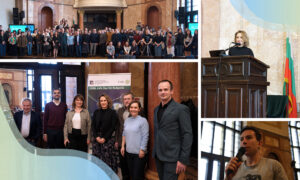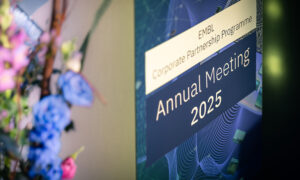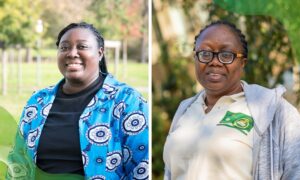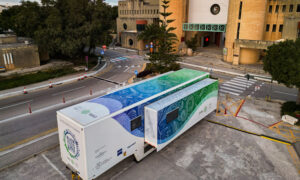
PhDs, proteomes and pints
One by one, six young scientists took the stage and gave talks about their research to the seated audience. But this wasn’t a conference or seminar series; the venue was an Irish pub, pints of Guinness were on every table in the darkened room, and the gathered crowd was there not only to learn, but also to be entertained.
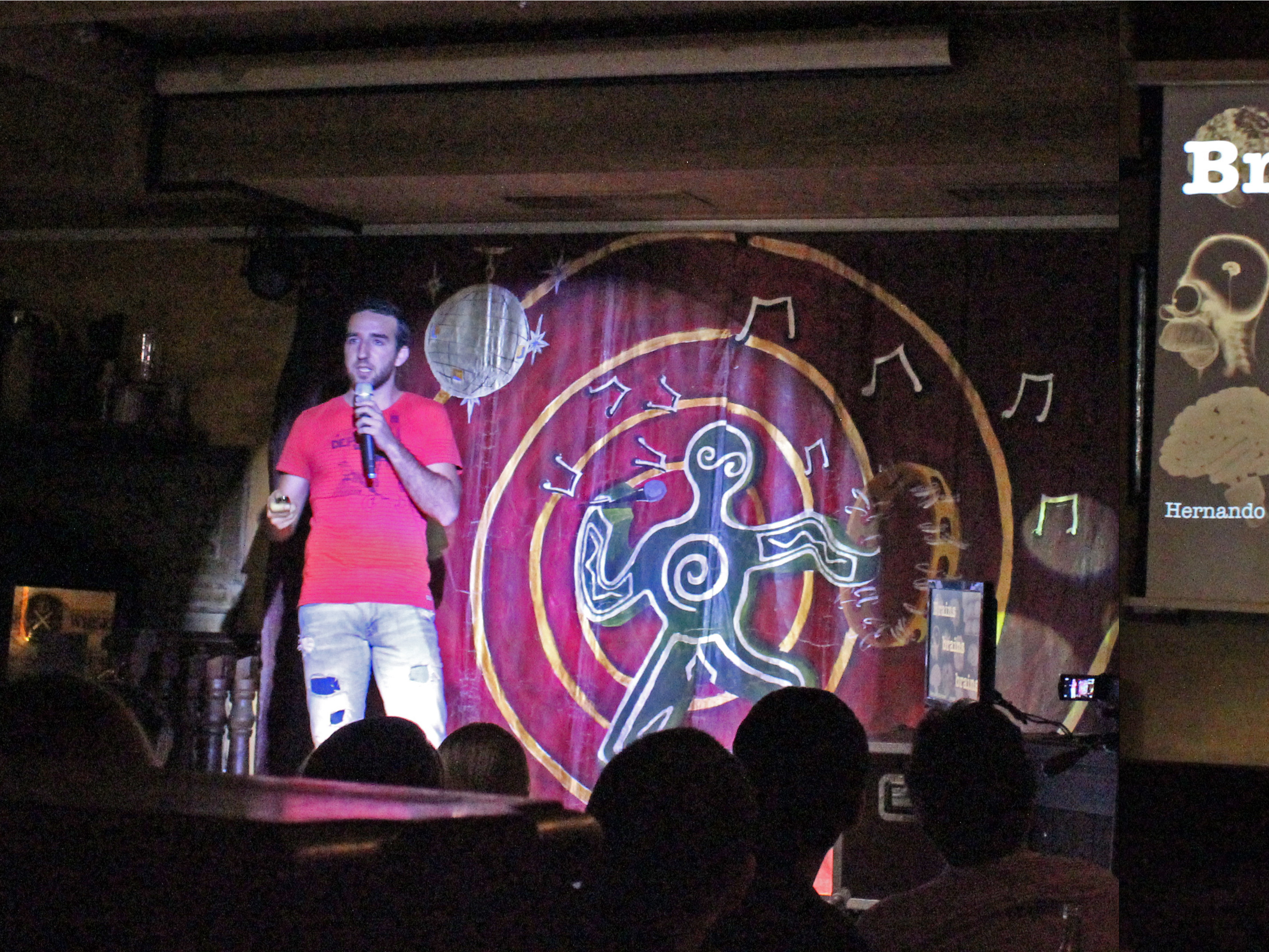
The performers certainly delivered. Attendees were wowed by beautiful animated renditions of tiny motor proteins ‘walking’ along microtubles in the cytoplasm of a cell, dragging their cargo behind them. They reacted with surprise when Daria Ezerina from DKFZ concluded her talk by claiming, “Fruits and veggies are good for you despite their antioxidants.” And, when Paul Costea from the Bork group at EMBL distributed cards with the scientific names of different bacteria, they giggled as he announced what each bug did (“That’s the worst one, that guy gives you syphilis!”) before revealing that bacteria in our bodies outnumber our own cells ten to one.
That’s the worst one, that guy gives you syphilis!
From the ground up
The event was the brainchild of Vasily Sysoev, a PhD student in the Ephrussi Group in Heidelberg. Long interested in communicating science to non-expert audiences, he decided he wanted to give a talk at a ‘science slam,’ in which speakers tell an engaging story about science in 10 minutes or less and the best story is chosen by the audience. Science slams evolved from poetry slams (verbal poetry competitions) less than a decade ago, and have since become popular in many major cities. But Sysoev discovered that there was no established English-language science slam presence in Heidelberg, Germany – the closest group being an hour’s drive north and the programme for their next slam in October was already in place. Rather than wait, Sysoev created his own.
He found a venue (a centrally located pub), chose a date, put up posters and found scientists from EMBL and other local organisations to participate. “It wasn’t too difficult to do, actually, and it offered a good way to advertise Heidelberg’s research institutes, because many people living in the surrounding area have no clue what they are,” he says. “That’s what motivated me – I thought it would be a nice way to bring the two communities together.”
Stars of the show
One of the most important things was to choose good speakers who would understand that they were not giving a traditional science talk. “People come to be entertained. I think that’s the main point, that’s the principle that has to be followed,” he says.
The scientists’ talks stayed within the field of biology, but covered a range of topics from detecting cancer-causing viruses to the activation of fat burning tissue in response to decreased temperature. “This was a completely new experience. I have never done a talk like this before,” said Hernando Martínez of the Arendt Group at EMBL, who gave the first talk of the evening about neuroimaging techniques. “Usually my talks are for scientists, so I use a different kind of language and focus on presenting data. This one required quite a lot of preparation to narrow down what I wanted to say and not focus on the technical details so much.”
People come to be entertained. I think that’s the main point, that’s the principle that has to be followed.
Martínez’s talk featured an overview of different neuroimaging techniques that his lab uses to peer into the inner workings of the brain, and he showed several striking images and animations to help the audience understand their significance. “I used the videos because that’s what engages me, and I thought they would help to engage other people, too,” he said.
The event was an overwhelming success. Sysoev expected about 25 attendees, but close to 100 showed up. He plans to organise another science slam in early October, and hopes to create a consistent schedule of events for the future, possibly collaborating with other groups. “Of course, my major priority is my PhD – research and publications. But I think it’s a very good skill to learn how to grow something from a seed to a big project,” he says.
Watch a video of a simulation that Hernando Martínez showed in his science slam talk:
